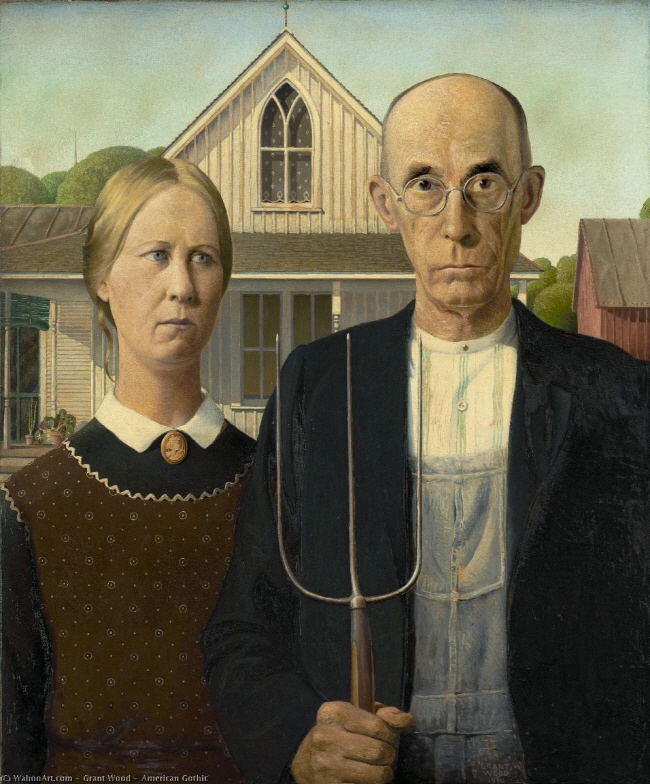
   |
[Misc] (Top 100 Paintings - 009) American Gothic by Grant Wood
최고관리자 | 19-10-06 03:17

(1) 다른 유튜브 contents와 전체 목록을 보시려면 "Write 2 Speak, YouTube채널"에 가입(subscribe - 클릭)후
"본인의 YouTube ID & Write2Speak 등록 ID"를 "write2speak@daum.net" 이메일로 보내 주시면
확인 후 본 사이트 정회원으로 등급됩니다. 많은 신청 기다리겠습니다.
(2) 참고로, "Write 2 Speak"에 올라오는 유튜브 contents는 정기적으로 삭제가 되며, "전체 내용"을 보시려면
위에 절차를 따라야만 "Write 2 Speak -> 자료실"영역에서 모든 내용을 다시 볼 수 있습니다.
****************************************************************************************
American Gothic by Grant Wood
American Gothic is a painting by Grant Wood in the collection of the Art Institute of Chicago. Wood's inspiration came from what is now known as the American Gothic House, and a decision to paint the house along with "the kind of people I fancied should live in that house." The painting shows a farmer standing beside his spinster daughter. The figures were modeled by the artist's sister and their dentist. The woman is dressed in a colonial print apron evoking 19th-century Americana, and the couple are in the traditional roles of men and women, the man's pitchfork symbolizing hard labor, and the flowers over the woman's right shoulder suggesting domesticity.
It is one of the most familiar images in 20th-century American art, and one of the most parodied artworks within American popular culture.
In August 1930, Grant Wood, an American painter with European training, was driven around the town by a young painter fromEldon, Iowa, John Sharp, looking for inspiration. He noticed the Dibble House, a small white house built in the Carpenter Gothicarchitectural style. Sharp's brother suggested in 1973 that it was on this drive that Wood first sketched the house on the back of an envelope. His earliest biographer, Darrell Garwood, noted that Wood "thought it a form of borrowed pretentiousness, a structural absurdity, to put a Gothic-style window in such a flimsy frame house." At the time, Wood classified it as one of the "cardboardy [sic] frame houses on Iowa farms" and considered it "very paintable."
After obtaining the permission of the Jones family, the house's owners, Wood made a sketch the next day in oil on paperboard from the house's front yard. This sketch displayed a steeper roof and a longer window with a more pronounced ogive than the actual house, features which eventually adorned the final work.
Wood decided to paint the house along with "the kind of people I fancied should live in that house." He recruited his sister Nan (1899–1990) to model the woman, dressing her in a colonial print apron mimicking 19th-century Americana. The man is modeled on Wood's dentist, Dr. Byron McKeeby (1867–1950) from Cedar Rapids, Iowa. The three-pronged hay fork is echoed in the stitching of the man's overalls, the Gothic window of the house, and the structure of the man's face. However, Wood did not add figures to his sketch until he returned to his studio in Cedar Rapids. He would not return to Eldon again before his death in 1942, although he did request a photograph of the home to complete his painting.
   |




